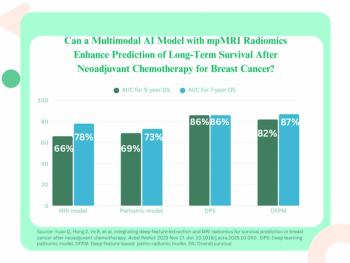
MRI Detects Altered Heart Function After Energy Drink Consumption
CHICAGO - Magnetic resonance images can detect significant strain on the heart following consumption of energy drinks high in caffeine and taurine.
CHICAGO - Cardiac MR imaging demonstrates significantly
“There are concerns about the products’ potential adverse side effects on heart function, especially in adolescents and young adults,” said researcher Jonas Dörner, MD.
German researchers undertook a study of healthy volunteers to determine the effect that energy drinks had on heart function. Many energy drinks have caffeine levels three times higher than traditional caffeinated beverages, like coffee or colas. A 2013 report from the Substance Abuse and Mental Health Services Administration stated that in the U.S. from 2007 to 2011, the number of emergency department visits related to energy drink consumption nearly doubled, increasing from 10,068 to 20,783. Most of the cases were identified among patients aged 18 to 25, followed by those aged 26 to 39.
In this study, 15 men and three women, mean age 27.5 years, underwent cardiac MRI before and one hour after consuming an energy drink that contained taurine (400 mg/100 ml) and caffeine (32 mg/100 ml). When comparing the pre- and post-consumption images, the researchers found that there was significantly increased peak strain (PS) and peak systolic strain rates (PSS) in the heart’s left ventricle in the post-consumption images (PS: without the energy drink -22.33 ± 1.7; with the energy drink -24.15 ± 2.4; p=0.01; PSSR: without energy drink -1.18 1/s ± 0.08; with energy drink -1.30 1/s ± 0.16, p=0.01).
The peak diastolic strain rate (PDSR) as a parameter for diastolic LV-relaxation was slightly, but not significantly higher compared to baseline (PDSR: without energy drink 1.90 1/s ± 0.33; with energy drink 2.09 1/s ± 0.44, p=ns). However, there were no significant differences in heart rate, blood pressure or blood ejection from the left ventricle before or after energy drink consumption.
"We've shown that energy drink consumption has a short-term impact on cardiac contractility," Dörner said. "Further studies are needed to evaluate the impact of long-term energy drink consumption and the effect of such drinks on individuals with heart disease."
[[{"type":"media","view_mode":"media_crop","fid":"21198","attributes":{"alt":"","class":"media-image","id":"media_crop_2665888451875","media_crop_h":"0","media_crop_image_style":"-1","media_crop_instance":"1426","media_crop_rotate":"0","media_crop_scale_h":"0","media_crop_scale_w":"0","media_crop_w":"0","media_crop_x":"0","media_crop_y":"0","title":" ","typeof":"foaf:Image"}}]]
Figure 1. To visualize cardiac magnetic resonance tagging, cross-section of the heart in common imaging technique is seen on the left and tagged myocardium using CSPAMM on the right.
Newsletter
Stay at the forefront of radiology with the Diagnostic Imaging newsletter, delivering the latest news, clinical insights, and imaging advancements for today’s radiologists.




























